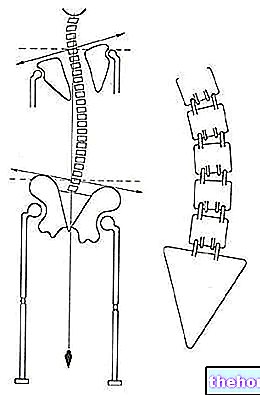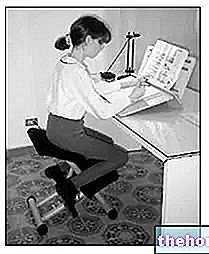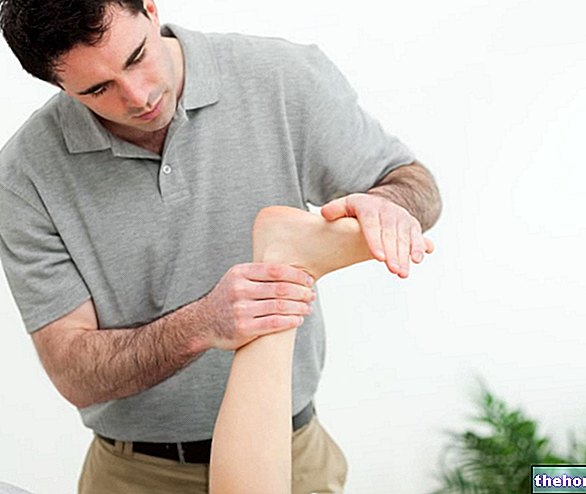Dislocations and sprains
The 206 bones that make up the human skeleton are held together by joints that are classified, based on the degree of mobility, into fixed, mobile and semi-mobile. Each mobile joint is in turn surrounded and supported by ligaments and by a fibrous sleeve, called joint capsule, which covers the entire joint. The stability of the two bone heads is also guaranteed by the tendons of the muscles that are inserted near the joint line. .

Dislocations are divided into complete and incomplete. In the first case there is a clear separation between the two articular surfaces, while in the second the bone heads remain partially in contact with each other. In both cases, an external intervention is required to bring the two joint surfaces back into place. On the contrary, if after the accident the two bone ends reposition themselves, we no longer speak of dislocation but of joint distortion.
Dislocations most frequently affect the shoulder (about 50% of cases), elbow, hip, fingers and patella, while subluxations are more common in the ankle and knee.
A dislocation occurs in the vast majority of cases when a strong trauma hits the joint or when this, during a movement, exceeds the limit of normal mobility. It is no coincidence that the most affected joints are also the most mobile ones; at the joint level, therefore. , mobility and instability go hand in hand.
For this reason, those who practice sports such as rugby, horse racing, skiing, volleyball, basketball, wrestling or other contact sports run a greater risk of suffering this type of injury.
Symptoms
- Joint instability
- Impossibility in movements involving the affected joint
- Visible and palpable joint deformation
- Sudden and sharp pain emphasized by palpation
- Swelling, abrasion, bruised skin
For further information: Dislocation Symptoms
Diagnosis
The diagnosis of dislocation is often quite immediate, since the joint damage is visible to the naked eye or otherwise palpable. However, to have a complete clinical picture it is good to undergo, before repositioning, diagnostic investigations such as x-rays and magnetic resonance. These tests are able to highlight any complications (bone fractures, injuries of vessels, nerves, etc.). The radiographic examination will then be repeated after the repositioning operation to check joint alignment.
Treatment and rehabilitation
In the acute phase of the trauma, the task of reducing the dislocation rests exclusively with the doctor who, thanks to his knowledge, will be able to put the joint surfaces back in place without creating, or in any case minimizing, further injuries. Sometimes this maneuver is performed under local anesthesia.
When a dislocation occurs, it is important to intervene promptly (within 24-48 hours). If the dislocation was delayed after a couple of days, scarring would arise which would make it necessary to reposition the surgery. The patient or the rescuers, of course, will not have to try in any way to put the joint back in place. While waiting for help, they can try to immobilize the joint with the utmost care and avoiding sudden movements. Always in the acute phase of the trauma, to reduce swelling and painful symptoms, ice can be applied to the affected area.
Once the dislocation has been reduced, the rehabilitation treatment will aim to restore lost mobility and functionality to the joint.
In most cases, a more or less long period of absolute rest (1-6 weeks) is followed. In less severe cases it is possible to intervene on the injured joint with early mobilization interventions. In this first phase, if there is very strong pain, anti-inflammatory and painkilling drugs are administered by mouth or through local infiltrations.
At the end of the immobilization phase, the rehabilitation treatment is continued, aimed at muscle strengthening and regaining lost mobility. The toning exercises allow you to quickly recover the lost tone by considerably increasing the stability of the joint. This intervention is nothing short of FUNDAMENTAL, since it avoids the persistence of a chronic instability which would considerably increase the risk of new dislocations.
Only after these phases, which on average require about 6-10 weeks, can the athlete gradually resume training. In case of subluxation, the return to normal sports and work activities is much faster (thirty-forty days).
Prevention
Dislocation prevention is essentially aimed at muscle strengthening. By maintaining an active life and practicing a little exercise it is in fact possible to improve the health of tendons and joints by increasing joint stability and removing the risk of dislocations. In contact sports it is also useful to use adequate protective devices.
For further information: Shoulder dislocation
Knee subluxation and leg extension




























